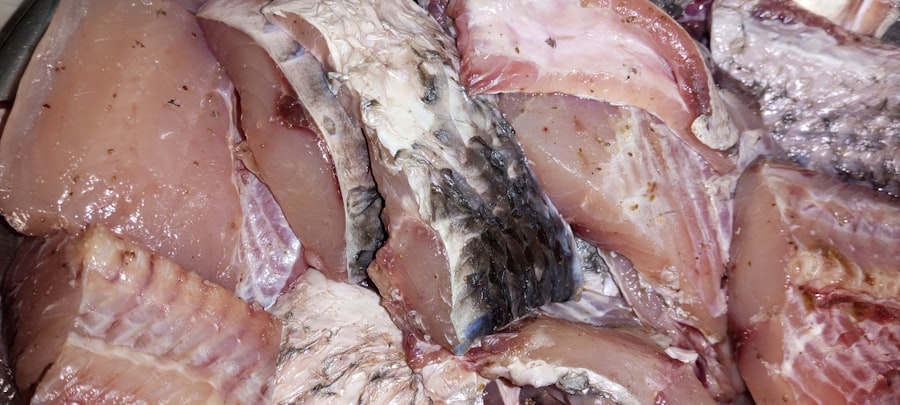Meat scraps, often overlooked in the culinary world, represent a significant portion of the meat industry that can be both economically advantageous and environmentally beneficial. These remnants, which include trimmings, off-cuts, and other by-products from meat processing, have traditionally been discarded or used for low-value products. However, as the global population continues to grow and the demand for sustainable food sources increases, the potential of meat scraps is gaining recognition.
The meat industry is beginning to understand that these scraps can be transformed into valuable products, thereby reducing waste and enhancing profitability. The concept of utilizing meat scraps is not new; however, it has gained momentum in recent years due to rising food costs and a heightened awareness of sustainability. As consumers become more conscious of their food choices, there is a growing demand for products that minimize waste and promote responsible sourcing.
This shift in consumer behavior is prompting businesses to rethink their strategies regarding meat scraps, leading to innovative approaches that not only benefit the bottom line but also contribute positively to the environment.
Key Takeaways
- Meat scraps are the leftover pieces of meat after the primary cuts have been removed, and they are often underutilized in food production.
- Understanding the economics of meat scraps is crucial for maximizing profit margins and reducing waste in the meat industry.
- Utilizing meat scraps in food production can lead to cost savings and the creation of new products such as sausages, meatballs, and pet food.
- Efficient processing of meat scraps is important for maintaining product quality, reducing waste, and maximizing profitability.
- Innovations in meat scrap utilization, market trends, and compliance with environmental and sustainability regulations are key factors for success in the meat scrap industry.
Understanding the Economics of Meat Scraps
The economics surrounding meat scraps is complex yet fascinating. Traditionally, meat scraps have been viewed as a liability rather than an asset. However, with the right approach, they can be transformed into a profitable resource.
The cost of raw meat continues to rise due to various factors such as supply chain disruptions and increased feed prices. Consequently, businesses are compelled to find ways to maximize every part of the animal, including those cuts that were once deemed undesirable. By doing so, they can significantly reduce costs and improve their overall financial performance.
Moreover, the market for meat scraps is evolving. As food manufacturers and processors seek to create value-added products, they are increasingly looking at meat scraps as a source of high-quality ingredients. This shift has led to the development of new markets for products such as sausages, broths, and pet foods made from these scraps.
The economic implications are profound; by tapping into this underutilized resource, companies can not only enhance their profit margins but also contribute to a more sustainable food system.
Utilizing Meat Scraps in Food Production

The utilization of meat scraps in food production is an area ripe with potential. Chefs and food manufacturers are discovering innovative ways to incorporate these remnants into their culinary creations. For instance, meat trimmings can be ground and seasoned to create flavorful sausages or used as a base for rich stocks and broths.
This not only reduces waste but also enhances the flavor profile of dishes, providing consumers with high-quality meals at a lower cost. In addition to traditional applications, there is a growing trend towards using meat scraps in gourmet cooking. High-end restaurants are beginning to embrace nose-to-tail cooking philosophies, where every part of the animal is utilized creatively.
This approach not only showcases culinary skill but also aligns with consumer preferences for sustainable dining experiences. By highlighting the use of meat scraps in their menus, chefs can attract environmentally conscious diners while also reducing their overall food costs.
The Importance of Efficient Processing
| Metrics | Data |
|---|---|
| Processing Time | 10 milliseconds |
| Resource Utilization | 90% |
| Throughput | 1000 units per hour |
| Efficiency Ratio | 95% |
Efficient processing of meat scraps is crucial for maximizing their value and minimizing waste. The meat industry must adopt advanced processing techniques that allow for the effective extraction and utilization of these by-products. Technologies such as vacuum sealing and cryogenic freezing can help preserve the quality of meat scraps, ensuring they remain safe for consumption while extending their shelf life.
Furthermore, investing in training for staff on how to handle and process meat scraps effectively can lead to significant improvements in productivity. Employees who are knowledgeable about the value of these by-products are more likely to take care in their handling and processing, ultimately leading to better quality products.
Maximizing Profit Margins with Meat Scraps
Maximizing profit margins through the use of meat scraps requires a strategic approach that encompasses various aspects of the business. First and foremost, companies must conduct thorough market research to identify potential opportunities for value-added products derived from meat scraps. By understanding consumer preferences and market trends, businesses can tailor their offerings to meet demand while ensuring profitability.
Additionally, establishing partnerships with local farms or suppliers can enhance the supply chain for meat scraps. By sourcing high-quality scraps from trusted providers, companies can create premium products that command higher prices in the market. Furthermore, effective marketing strategies that highlight the sustainability and ethical sourcing of these products can attract a loyal customer base willing to pay a premium for responsibly produced goods.
Innovations in Meat Scrap Utilization

Innovation plays a pivotal role in the successful utilization of meat scraps within the food industry. Companies are increasingly exploring new technologies and methods to transform these by-products into desirable products. For example, advancements in food science have led to the development of new preservation techniques that enhance the shelf life and safety of meat scraps, allowing them to be used in a wider range of applications.
Moreover, there is a growing interest in creating plant-based alternatives that incorporate meat scraps as a flavor enhancer or protein source. This trend reflects a broader movement towards hybrid products that cater to both meat lovers and those seeking plant-based options. By embracing innovation, businesses can stay ahead of the curve and capitalize on emerging trends while maximizing the value derived from meat scraps.
Market Trends and Demand for Meat Scraps
The market trends surrounding meat scraps indicate a significant shift towards sustainability and waste reduction in food production. As consumers become more aware of the environmental impact of food waste, there is an increasing demand for products that utilize every part of the animal. This trend is particularly evident among younger consumers who prioritize ethical sourcing and sustainability in their purchasing decisions.
Additionally, the rise of social media has amplified awareness around food waste issues, prompting consumers to seek out brands that align with their values. Companies that effectively communicate their commitment to reducing waste through the utilization of meat scraps are likely to resonate with this audience. By tapping into these market trends, businesses can position themselves as leaders in sustainability while also driving sales growth.
Environmental and Sustainability Considerations
The environmental implications of utilizing meat scraps cannot be overstated. The food industry is one of the largest contributors to greenhouse gas emissions and waste generation globally. By finding ways to repurpose meat scraps, companies can significantly reduce their carbon footprint while promoting a more sustainable food system.
This not only benefits the environment but also enhances brand reputation among increasingly eco-conscious consumers. Moreover, utilizing meat scraps contributes to a circular economy where resources are reused rather than discarded. This approach aligns with global sustainability goals aimed at reducing food waste and promoting responsible consumption practices.
As businesses adopt more sustainable practices regarding meat scrap utilization, they not only comply with regulatory requirements but also position themselves favorably in an increasingly competitive market.
Regulatory and Compliance Issues
Navigating regulatory and compliance issues related to meat scrap utilization is essential for businesses operating in this space. Food safety regulations dictate how meat products must be handled, processed, and labeled to ensure consumer safety. Companies must stay informed about local and international regulations governing meat scrap usage to avoid potential legal pitfalls.
Additionally, transparency in sourcing and processing practices is becoming increasingly important as consumers demand accountability from brands. Businesses must ensure that they adhere to ethical standards while also complying with health regulations related to meat scrap utilization. By prioritizing compliance and transparency, companies can build trust with consumers while mitigating risks associated with regulatory violations.
Risks and Challenges in Meat Scrap Utilization
Despite the numerous benefits associated with utilizing meat scraps, there are inherent risks and challenges that businesses must navigate. One significant challenge is ensuring consistent quality across different batches of meat scraps. Variability in sourcing can lead to inconsistencies in flavor and texture, which may impact product quality and consumer satisfaction.
Additionally, there is a risk associated with consumer perception; some individuals may view products made from meat scraps as inferior or less desirable compared to traditional cuts of meat. To combat this perception, companies must invest in marketing efforts that educate consumers about the value and quality of products derived from meat scraps. By addressing these challenges head-on, businesses can successfully leverage meat scraps as a valuable resource.
Strategies for Success in the Meat Scrap Industry
In conclusion, the potential for success in the meat scrap industry lies in adopting innovative strategies that prioritize sustainability, efficiency, and consumer engagement. Companies must embrace new technologies and processing methods that enhance the value derived from meat scraps while also addressing regulatory compliance issues. By fostering partnerships within the supply chain and conducting thorough market research, businesses can identify opportunities for growth while maximizing profit margins.
Furthermore, effective marketing strategies that highlight the ethical sourcing and sustainability aspects of products made from meat scraps will resonate with today’s environmentally conscious consumers. As awareness around food waste continues to grow, businesses that position themselves as leaders in this space will not only thrive economically but also contribute positively to global sustainability efforts. Ultimately, success in the meat scrap industry hinges on a commitment to innovation, quality, and responsible practices that benefit both consumers and the planet alike.
In recent years, the economics of meat scraps have gained significant attention as businesses and consumers alike seek to minimize waste and maximize value. An insightful article on this topic can be found on Hey Did You Know This, which delves into innovative ways the food industry is repurposing meat scraps to enhance sustainability and profitability. By exploring these strategies, the article sheds light on how companies are turning what was once considered waste into valuable resources, ultimately contributing to a more efficient and environmentally friendly food system. For more information, you can read the full article here.
WATCH THIS! 🌭The 100-Year Scam That Invented Hot Dogs
FAQs
What are meat scraps?
Meat scraps refer to the leftover pieces of meat that are trimmed off during the butchering process or are leftover from the preparation of meat products. These scraps can include fat, trimmings, and other small pieces of meat.
What is the economic significance of meat scraps?
Meat scraps have economic significance as they can be utilized in various ways to minimize waste and maximize profits in the meat industry. They can be used to produce processed meat products, pet food, and other value-added products, thus contributing to the overall profitability of meat processing operations.
How are meat scraps utilized in the meat industry?
Meat scraps are utilized in the meat industry for the production of processed meat products such as sausages, hot dogs, and ground meat. They are also used in the production of pet food, animal feed, and as ingredients in the manufacturing of gelatin and other food products.
What are the environmental implications of meat scraps?
The utilization of meat scraps can have positive environmental implications as it reduces waste and the need for additional resources to produce meat products. However, the disposal of meat scraps can also pose environmental challenges if not managed properly, such as contributing to landfill waste and potential pollution.
How do meat scraps contribute to the circular economy?
Meat scraps contribute to the circular economy by being utilized as a valuable resource in the production of various products, thus reducing waste and promoting a more sustainable and efficient use of resources within the meat industry.
